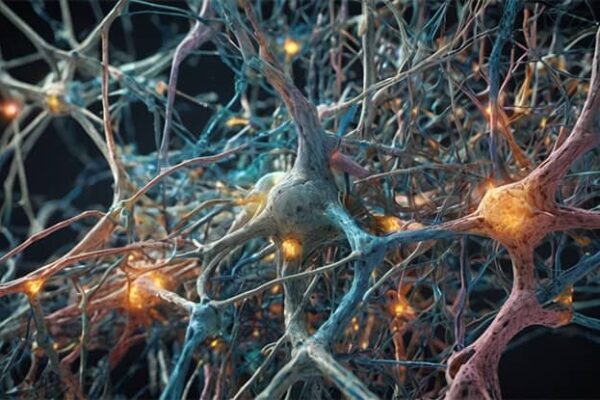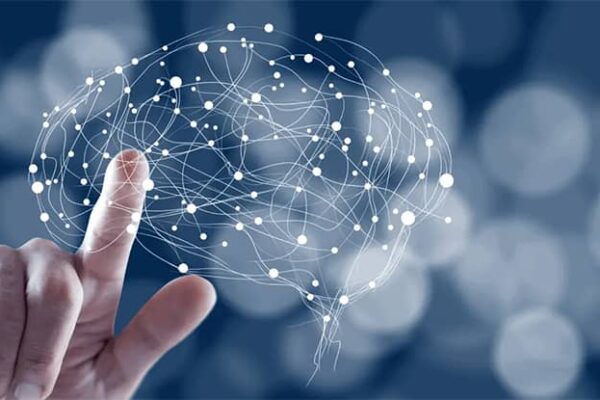Apraxia is a neurological disorder that affects a person’s ability to perform purposeful movements, despite having intact motor functions and understanding of the task. This condition can significantly complicate daily life, impacting such simple actions as dressing, using utensils, or writing. In this article, I will examine in detail the causes of apraxia, its types, diagnostic methods, and, most importantly, effective ways for recovery and rehabilitation.

Types of Apraxia
The human brain is a remarkable organ capable of coordinating the most complex movements with impressive precision. From a simple gesture of greeting to the virtuoso performance on a musical instrument, our bodies follow the brain’s commands with astonishing harmony. However, with apraxia, this harmony is disrupted, creating a disconnect between intention and action.
Apraxia doesn’t merely make movements difficult – it alters a person’s perception of the world. Familiar movements become intricate puzzles, and simple tasks turn into insurmountable obstacles. This condition seems to trap a person within their own body, restricting their ability to interact with the outside world.
Apraxia is not a uniform disorder and can manifest in various forms. Understanding the different types of apraxia is essential for accurate diagnosis and optimal treatment planning.
- Ideomotor Apraxia: Impaired ability to perform purposeful movements on command or to imitate actions, although the patient may spontaneously perform these same actions in daily life.
- Ideational Apraxia: Difficulty in planning the sequence of actions required to complete a complex task, even if individual movements are preserved.
- Kinetic (or Limb-Kinetic) Apraxia: Impaired ability to perform precise, coordinated movements, especially of the distal limbs (hands, feet, fingers, and toes).
- Constructional Apraxia: Difficulty with spatial organization and performing actions involving construction, drawing, or assembling objects.
- Speech Apraxia (Apraxia of Speech): Impaired ability to plan and execute the movements necessary for producing sounds and words, while comprehension of speech is intact.
- Dressing Apraxia: Specific difficulty with dressing correctly, despite preserved overall motor functions.
- Oromotor Apraxia: Difficulty performing voluntary movements of the mouth and facial muscles unrelated to speech (e.g., puffing cheeks, blowing a kiss).
Each of these types of apraxia can present in varying degrees of severity and is often accompanied by other neurological symptoms. Understanding the specifics of each type of apraxia is critically important for accurate diagnosis and developing an effective treatment and rehabilitation plan.
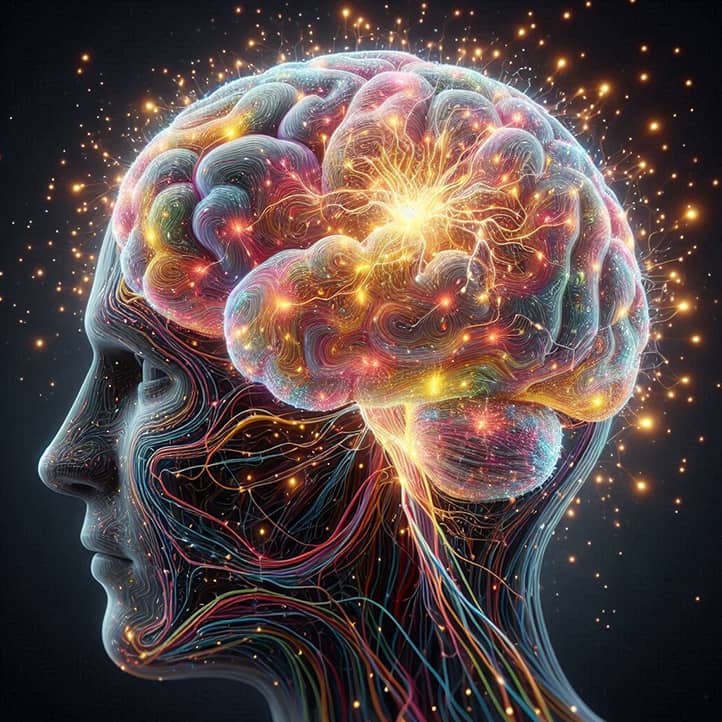
Causes of Apraxia
Behind every movement of our body lies a complex neural ensemble, working with the precision of a Swiss watch. Apraxia arises when there is a failure within this well-tuned mechanism. Just as a malfunction in a single component can disrupt the operation of an entire clock, damage to specific areas of the brain results in impaired ability to perform purposeful movements.
Interestingly, apraxia can occur even when motor and sensory functions are intact. This indicates that the brain not only gives commands to muscles but also stores complex “movement patterns” accumulated over a lifetime. When these patterns are disrupted, it’s akin to attempting to play a complex melody on an out-of-tune instrument.
Studying the causes of apraxia is not only a path toward developing effective treatment methods but also an opportunity to deepen our understanding of how the brain works. Each case of apraxia is a unique puzzle, solving which brings us closer to unraveling the mysteries of human consciousness and body control mechanisms.
Stroke
A stroke is one of the most common causes of apraxia. In ischemic or hemorrhagic stroke, blood supply to certain areas of the brain is disrupted, which can lead to damage in regions responsible for planning and executing movements.
Characteristics of apraxia caused by stroke:
- May occur suddenly along with other stroke symptoms.
- Often affects one side of the body more than the other.
- The severity of symptoms can vary depending on the location and extent of the lesion.
Traumatic Brain Injury (TBI)
Traumatic brain injury can cause apraxia, especially if the frontal or parietal lobes are affected. The severity of apraxia in TBI cases may depend on the strength of the impact, the location of the injury, and the patient’s overall condition.
Typical characteristics of apraxia in TBI:
- May be accompanied by other cognitive impairments.
- Symptoms may not appear immediately after the injury but can develop gradually.
- Recovery may be prolonged and require comprehensive rehabilitation.
Neurodegenerative Diseases
Some neurodegenerative diseases, such as Alzheimer’s disease and Parkinson’s disease, can cause apraxia as one of the symptoms of progressive brain damage.
Alzheimer’s Disease:
- Apraxia often develops in the later stages of the disease.
- It may coincide with memory impairments and other cognitive problems.
- Symptom progression is typically slow but relentless.
Parkinson’s Disease:
- Apraxia may manifest as difficulties initiating movements.
- Often coexists with other motor impairments characteristic of Parkinson’s disease.
- May worsen as the disease progresses.
Brain Tumors
Brain tumors can cause apraxia by exerting pressure on the brain areas responsible for movement planning and execution. Symptoms of apraxia in brain tumors may vary depending on the location and size of the tumor.
Characteristics of apraxia caused by brain tumors:
- Symptoms may develop gradually or appear suddenly.
- There may be improvement after tumor removal or size reduction.
- Often accompanied by other neurological symptoms.
Central Nervous System Infections
Certain infectious diseases affecting the central nervous system, such as encephalitis or meningitis, may cause apraxia as one of the symptoms.
Characteristics of apraxia in CNS infections:
- May develop against a background of general worsening in the patient’s condition.
- Symptoms can be reversible with timely and adequate treatment of the infection.
- Often accompanied by other neurological disorders.
Understanding the various causes of apraxia helps physicians not only in diagnosis but also in predicting the course of the disorder and choosing the most effective treatment and rehabilitation methods. It’s important to note that in some cases, apraxia may be caused by a combination of factors, requiring a comprehensive approach to diagnosis and treatment.
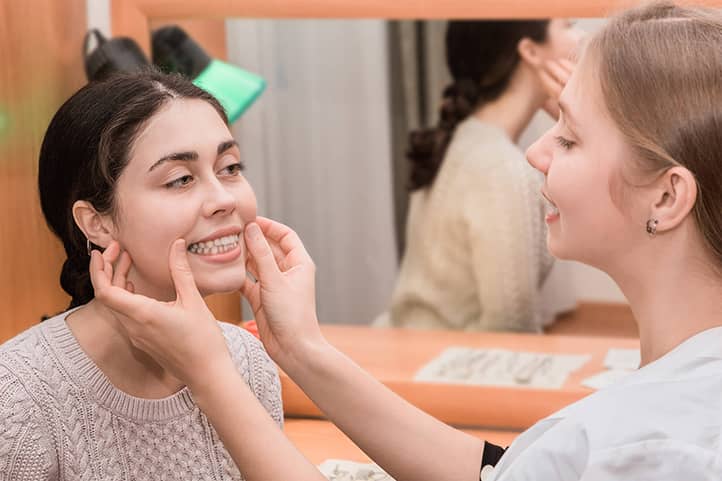
Diagnosis of Apraxia
In the world of modern medicine, diagnosing apraxia is becoming increasingly accurate thanks to advances in technology. Neuroimaging methods allow specialists to look into the working brain, as if peering behind the veil of its mysteries. These “photos” of the brain not only assist in diagnosis but also provide valuable information for treatment planning.
However, despite all technological advances, the key role in diagnosing apraxia still belongs to a careful and experienced specialist. Their ability to interpret test results, observe the patient, and ask the right questions remains irreplaceable. In this sense, diagnosing apraxia is an art that combines cutting-edge technology with human intuition.
Accurate and timely diagnosis of apraxia is crucial in determining the optimal strategy for treatment and rehabilitation. The diagnostic process usually includes several stages and assessment methods.
Neurological Examination
A neurological examination is the first and essential step in diagnosing apraxia. During this examination, a neurologist evaluates the patient’s overall nervous system condition and identifies specific symptoms characteristic of apraxia.
Main components of the neurological examination for suspected apraxia:
- Motor Function Assessment: checking muscle strength, tone, and reflexes.
- Coordination Testing: performing simple and complex motor tasks.
- Gesture and Object Use Testing: testing gestures and ability to use objects as intended.
- Speech and Articulation Assessment.
The doctor may ask the patient to perform a series of actions, such as:
- Imitating the use of objects (e.g., combing hair with an imaginary comb).
- Performing symbolic gestures (e.g., saluting or waving).
- Executing a sequence of actions (e.g., preparing tea).
Neuropsychological Testing
Neuropsychological testing allows for a more detailed assessment of the patient’s cognitive functions and identification of specific impairments characteristic of different types of apraxia.
Main components of neuropsychological testing for apraxia:
- Spatial Perception and Visual-Construction Skills Testing.
- Praxis Evaluation: ability to perform purposeful movements.
- Planning and Execution Function Testing.
- Understanding and Execution of Verbal Commands.
Examples of neuropsychological tests used in apraxia diagnosis:
- Figure Copying Test: the patient is asked to copy simple geometric shapes or more complex drawings.
- Object Assembly Test: assessing the ability to assemble an object from separate parts (e.g., a puzzle or construction set).
- Action Sequencing Test: the patient is asked to describe or perform a sequence of actions to achieve a certain goal (e.g., making a sandwich).
Neuroimaging Methods (MRI, CT)
Neuroimaging methods, such as magnetic resonance imaging (MRI) and computed tomography (CT), play an important role in diagnosing apraxia, helping to identify structural changes in the brain that may cause movement impairments.
Advantages of neuroimaging methods:
- Enable identification of brain lesions (e.g., due to stroke or tumors).
- Help determine the location and extent of damage.
- Can detect signs of neurodegenerative diseases.
MRI:
-
- Provides high-resolution and high-contrast images of brain soft tissues.
- Allows detection of even small structural changes.
- Particularly effective for diagnosing ischemic strokes and neurodegenerative diseases.
CT:
-
- A quick method, especially useful in emergency situations.
- Effective for detecting hemorrhages and large structural changes.
- Can be used for patients with MRI contraindications.
Additional neuroimaging methods may also be used in some cases:
- Functional MRI (fMRI): evaluates brain region activity during specific tasks.
- Positron Emission Tomography (PET): assesses brain metabolic activity, identifying areas of decreased function.
A comprehensive approach to apraxia diagnosis, including neurological examination, neuropsychological testing, and neuroimaging methods, not only confirms the disorder but also identifies its type, lesion location, and possible causes. This information is critical for developing an effective treatment and rehabilitation strategy tailored to each patient’s individual needs.
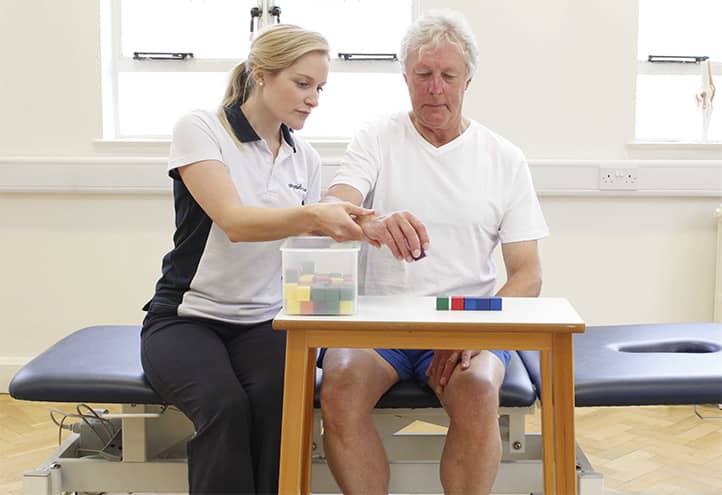
Recovery and Rehabilitation Methods
Modern rehabilitation methods for apraxia are like a “reboot” of the nervous system. Specialists use various techniques to help the brain create new neural connections or restore damaged ones. This process resembles learning a new language – initially, it seems impossible, but gradually, with practice, it becomes more natural.
Interestingly, rehabilitation for apraxia often leads to unexpected positive results. Patients frequently report improvements not only in motor functions but also in cognitive abilities, mood, and overall well-being. This reminds us of the close connection between body and mind and how working on one aspect can positively impact the entire system.
Rehabilitation of patients with apraxia requires a comprehensive approach involving various therapeutic methods. The goal of rehabilitation is to maximize the recovery of lost functions and help the patient adapt to everyday life.
Occupational Therapy
Occupational therapy plays a key role in the rehabilitation of patients with apraxia. This method aims to restore daily life skills and adapt to existing limitations.
Main areas of occupational therapy for apraxia:
- Training in performing daily activities (dressing, cooking, personal hygiene).
- Teaching the use of assistive devices and tools.
- Adapting the environment to facilitate task completion.
- Development of fine motor skills and coordination.
Methods used in occupational therapy:
- Repetition and practice of specific actions.
- Breaking complex tasks into simpler steps.
- Using visual cues and instructions.
- Applying adaptive equipment.
Speech Therapy
Speech therapy is especially important for patients with oromotor apraxia, affecting speech and articulation.
Main goals of speech therapy for apraxia:
- Improving articulation and sound pronunciation.
- Developing speech fluency.
- Training facial and oral muscles.
- Teaching alternative communication methods if necessary.
Methods used in speech therapy:
- Articulatory exercises.
- Repetition of syllables, words, and phrases.
- Use of visual aids for correct speech organ positioning.
- Use of specialized biofeedback devices.
Physical Therapy
Physical therapy helps improve overall motor function, coordination, and balance, which is especially important in ideomotor and ideational apraxia.
Main areas of physical therapy for apraxia:
- Improving coordination of movements.
- Building muscle strength and endurance.
- Balance and gait training.
- Restoring correct movement patterns.
Physical therapy methods:
- Coordination and balance exercises.
- Strength training.
- Use of equipment and specialized machines.
- Proprioceptive neuromuscular facilitation (PNF) techniques.
Cognitive-Behavioral Therapy (CBT)
Cognitive-behavioral therapy (CBT) can be beneficial for patients with apraxia, especially in combination with other rehabilitation methods.
CBT goals for apraxia:
- Enhancing awareness and understanding of movements.
- Developing coping strategies.
- Addressing emotional reactions to limitations caused by apraxia.
- Increasing motivation for rehabilitation participation.
CBT methods:
- Visualization techniques and mental practice of movements.
- Training in relaxation and stress management.
- Developing positive thinking and self-support.
- Setting realistic goals and planning to achieve them.
Assistive Technologies
Modern technologies can significantly improve the lives of patients with apraxia and support their rehabilitation.
Examples of assistive technologies:
- Alternative and augmentative communication (AAC) devices.
- Smartphone and tablet applications to aid in everyday tasks.
- Adaptive computer devices (special keyboards, mice).
- Smart home systems to facilitate control of household appliances.
Advantages of using technology:
- Increasing patient independence in daily life.
- Improving communication with others.
- Continuing professional activities.
- Stimulating cognitive functions through specialized apps and games.
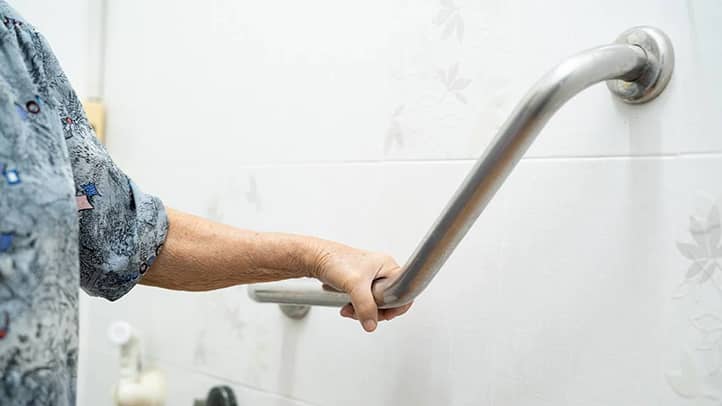
Adaptation Strategies in Everyday Life
Adapting to life with apraxia is an art of finding new paths in a familiar world. Much like how a blind person develops heightened hearing, individuals with apraxia learn to use preserved functions to compensate for lost skills. This requires creativity, patience, and a willingness to experiment with new approaches to familiar tasks.
It is fascinating to see how simple modifications to the environment can significantly ease the life of a person with apraxia. Small changes, such as installing handrails or using specially designed utensils, can turn a challenging task into a manageable one. This reminds us how important it is to adapt the surrounding world to the needs of a person, rather than the other way around.
During the process of adapting to life with apraxia, many patients discover unexpected talents and abilities. The necessity of overcoming difficulties often leads to the development of new skills, increased creativity, and strengthened willpower. Thus, adaptation becomes not only overcoming limitations but also a path of personal growth and self-discovery.
Modifying the Environment
Adapting the living space can significantly ease the performance of daily tasks for people with apraxia.
Examples of modifications:
- Installing handrails in the bathroom and toilet.
- Using contrasting colors to highlight important objects.
- Organizing the space to minimize the need for complex movements.
- Replacing regular doorknobs with more accessible lever mechanisms.
Using Prompts and Reminders
Visual and auditory prompts can help patients with apraxia perform daily tasks.
Examples of prompts:
- Labels with instructions on household appliances.
- Using timers and alarms as reminders for important actions.
- Creating visual diagrams to complete complex tasks.
- Applying color coding to organize items.
Simplifying Complex Tasks
Breaking down complex tasks into simpler steps can greatly facilitate their completion.
Simplification strategies:
- Creating step-by-step instructions for daily tasks.
- Using ready-made or semi-prepared products to simplify cooking.
- Choosing clothing with simple fastenings (e.g., Velcro instead of buttons).
- Organizing items so that frequently used objects are easily accessible.

The Role of Family and Loved Ones in the Recovery Process
Family support in the recovery process for apraxia is like a solid foundation on which the entire rehabilitation process is built. The love, patience, and understanding of loved ones provide the emotional support that helps the patient overcome difficulties and maintain hope, even in the most challenging moments.
It is noteworthy that the rehabilitation process often becomes a catalyst for strengthening family bonds. Jointly overcoming difficulties, mutual support, and joy from each small success bring family members closer, deepening their relationships.
However, it is important to remember that caring for a loved one with apraxia can be emotionally and physically exhausting for family members. Therefore, it is crucial that caregivers also seek support and practice self-care. Balancing care for the patient with self-care is key to long-term success in the rehabilitation process.
Emotional Support
Emotional support is necessary to maintain the patient’s motivation and positive outlook.
Ways to provide emotional support:
- Demonstrating patience and understanding.
- Encouraging even the smallest successes.
- Creating a positive atmosphere at home.
- Participating in support groups for families of patients with apraxia.
Helping with Exercises
Family can actively participate in the rehabilitation process by helping the patient perform recommended exercises.
Recommendations for family members:
- Learning the techniques and methods recommended by specialists.
- Regularly performing exercises together with the patient.
- Creating a schedule of activities and ensuring adherence to it.
- Ensuring safety during physical exercises.
Creating a Supportive Environment
Family can help create an environment that promotes recovery and adaptation.
Ways to create a supportive environment:
- Implementing recommended modifications in the home space.
- Minimizing distractions during task performance.
- Providing necessary assistive devices and technologies.
- Encouraging the patient’s independence in safe conditions.

Prognosis and Long-Term Perspectives
Predicting the course of apraxia is like attempting to forecast long-term weather — numerous factors affect the final outcome, and each case is unique. However, just as meteorologists use complex models to forecast the weather, doctors rely on accumulated knowledge and experience to assess the patient’s recovery prospects.
It is fascinating to see how advancements in neuroscience and technology gradually change our understanding of long-term outcomes in apraxia. What was once considered irreversible today can be corrected with new methods of treatment and rehabilitation, offering hope to many patients and their families and opening new horizons of possibilities.
It is important to remember that the prognosis for apraxia is not just a medical verdict but a starting point for building a new life. Even with an unfavorable prognosis, many patients find ways to adapt, develop new skills, and lead fulfilling lives. This demonstrates the incredible capacity of the human spirit to overcome challenges and find meaning and joy in new circumstances.
Factors Influencing Recovery
Understanding the factors that influence recovery can help in developing more effective rehabilitation strategies.
Key factors:
- Cause of apraxia (e.g., stroke or neurodegenerative disease).
- Location and extent of brain damage.
- Patient’s age.
- Presence of comorbidities.
- Timeliness of rehabilitation onset.
- Intensity and regularity of rehabilitation activities.
- Patient motivation and family support.
Possible Outcomes
The outcomes of apraxia can vary, from full recovery to the need for long-term adaptation.
Outcome options:
- Complete recovery: Possible with mild forms of apraxia and timely treatment.
- Significant improvement: Partial function recovery with some limitations.
- State stabilization: Retention of certain impairments with the possibility of adaptation.
- Progression: Typical of apraxia caused by neurodegenerative diseases.

Conclusion
Apraxia is a complex neurological disorder that affects not only motor functions but also a person’s entire life. This condition challenges our understanding of the relationship between brain and body, forcing us to reconsider conventional ideas about movement and action.
Modern medicine has made significant strides in understanding the mechanisms of apraxia and developing methods for its treatment. From advanced diagnostic techniques to innovative approaches in rehabilitation, each step in this field opens new opportunities for patients and their families. A comprehensive approach that includes various types of therapy, environmental adaptation, and assistive technologies allows many people with apraxia to significantly improve their quality of life.
However, the path to recovery from apraxia is not only a medical task but also a deeply personal journey. It requires patience, perseverance, and the support of loved ones. Each case of apraxia is unique, and rehabilitation success largely depends on an individualized approach and the patient’s motivation. It is important to remember that even in the face of serious impairments, there is always potential for adaptation and improved quality of life.
Research on apraxia continues, bringing new discoveries and possibilities every day. This offers hope to patients and their families for more effective treatments in the future. At the same time, the experiences of people living with apraxia teach us to value the human spirit’s capacity to overcome challenges and find new ways of self-expression and interaction with the world.
Ultimately, the story of each person facing apraxia is a story of overcoming, adaptation, and discovering new facets of oneself. It is a reminder that human potential is limitless, and even in the most difficult circumstances, we can find the strength for growth and development.

